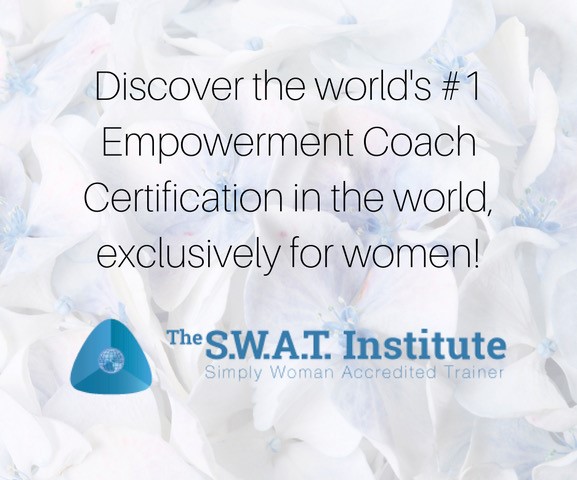- Mothering in a Fractured TimePosted 1 week ago
- Beneath the Surface: Revealing Life’s Goals nurtured from a Spiritual SeedPosted 1 week ago
- How We Kept Marital Peace while Traveling the World with Our KidsPosted 3 weeks ago
- How I Coped with Feeling Lost in a Changing SocietyPosted 3 weeks ago
- The Unexpected Liberation of a Butt DialPosted 2 months ago
- Why is France making abortion a constitutional right?Posted 2 months ago
Power-With Versus Power-Over: Tapping into Women’s Wisdom for Mutual Benefit

By Annette Simmons
Consensus can bring a lot of different perspectives to a project with tremendous benefits to all. But it’s not always the de facto way we operate. At issue is whether we’re employing a power-with or a power-over approach. Both have value, though too often, one is considered the standard and the other the anomaly. Different life experiences, goals, and preferences often lead men and women to embrace seemingly opposing perspectives about what power means, who it is for, and how it works. I asked hundreds of men and women to tell me a story about using power in action — and discovered distinct differences in the strategies men and women value.
The two basic strategies involving power are power-over and power-with. I’ve found that power-over strategies are valued by both men and women. But far more women than men reported a preference for power-with strategies.
Power-Over
Power-over addresses problems with systems that build conformity and enable scalability. It decreases inconsistencies decrease, systematizes routines, and standardizes divergent approaches. The objective is to inspire obedience in return for reliability and predictability. All goals are translated into tangible metrics to guide compliance and measure success.
Power-With
Power-with addresses problems with situational solutions, inviting autonomous contributions and multiple interpretations. It’s based on values of justice, equity and safety. Participation isn’t limited to specific roles or pre-planned tasks, but is fueled by the emotional rewards of creating situational solutions. Its goals tend to be intangible — and progress is monitored by collectively sharing experiences and stories that inspire faith in continued participation.
Not Either/Or
No question, we need both perspectives. If power-over sounds familiar — particularly in terms of business and governing— it’s likely because most of the literature about power was written by men — and power-over is often seen as the gold standard. But it would be a mistake to ignore the hidden wisdom of women who tell stories of how they avoid power-over and user power-with strategies instead when pursuing intangible goals like family harmony or a collective agreement.
But whether by nature or nurture, qualitative goals are often distorted when reduced to quantitative linear methods. Many of the “if you can’t measure it, you can’t manage it” folks criticize power-with advocates as too emotional, lacking focus, and hard to monitor. But power-with strategies devalue control specifically to activate participation that adapts to diverse circumstances. As situations evolve and change, it delivers internal consensus-based innovations. Anyone who has ever enjoyed the power-with strategy of a great pot-luck meal knows how this can work. Power-with has the power to build mutual trust — and that achieves immeasurable results.
The Need for Intangibles
Power-over strategies seek to define a problem in economic terms of quantifiable costs and benefits. As a reward for participating, those with resources are promised tangible benefits. Communication follows carefully thought-out plans with clear milestones that facilitate buy-in and track metrics —as evidence that benefits are being achieved. It’s not a bad strategy to achieve concrete goals within a stable system. But intangible goals get lost in translation. You can’t use metrics to pre-interpret unpredictable circumstances.
Consider the intangible goal of mutual trust — mutual trust is exactly what we need to collectively address a thorny, global problem such as climate change. Clearly, we’re not going to find solutions by only using “power-over” strategies.
Telling Our Stories
Women’s “power-with” stories present a different kind of progression. For instance, a woman named Kathy told me how she used her power to set up a community barter program where local people could trade useful items for free. She went to a number of owners with empty buildings until she found someone who already shared her faith in community generosity.
Trying to put a number on the value of emotional rewards robs everyone of the joy of collaboration. For this kind of goal, the real benefits are emotional rewards — well beyond any tangible financial ones. And in Kathy’s case, choosing to work with everyone resulted in a project that benefits an entire community.
Here are four strategies involved in taking a “power-with” approach:
• Keep your plans loose to encourage input.
Keeping plans open meant that the project could evolve to meet conditions as they arose. The flexibility also made room for multiple points of view and ideas.
• Use stories to evaluate problems and solutions.
First-hand experiences and shared stories are a better way to track progress than metrics. In Kathy’s case, volunteers and resource providers could collectively agree in the value of helping a girl learning clarinet find a free music stand or upcycling a hobby horse to become a little boy’s Christmas present.
• Keep the intangible goals intangible.
Imposing proxy metrics to represent the diverse, unpredictable nature of value-based goals introduces distortions that depreciate emotional engagement. In the case of the community barter center, imposing metrics would have diminished its impact.
• Devalue control.
Because power-with strategies depend on mutual faith, the process intentionally devalues control — which creates plenty of room for faith to grow.
Challenge Your Own Assumptions
Statistically, more women prioritize intangible moral goals — and are thus more likely to develop skills in both power-over and power-with strategies. It’s also true that women who use power-with strategies to achieve moral goals can end up doing more than their fair share of unpaid labor.
But those trained to believe that “power-over” strategies are superior often learn that translating intangible goals into tangible criteria narrows the broader vision. Detailed plans with milestones and tracking systems can greatly limit imaginative input. And rather than resent men who don’t spend as much time on intangible goals, it’s time to share the value of power-with strategies to achieve moral goals like sustainability and social trust.
What I’ve found in my research on how women and men use power is that women tell more stories that describe power as the ability to benefit others more than themselves. For them, power means the ability to protect and support community, nature, and people from competitive systems that only value what can be measured.
It may be that evolution (nature and nurture) has conspired to attend to both sides of the us/them paradox by splitting the difference across gender preferences — so women are a bit more concerned about protecting “them” while men are a bit more attuned to protecting “us.” The recent success of female leaders during the pandemic suggests that “power-with” strategies are a much more effective approach to protect humanity. Jacinda Ardern encouraged curiosity when she did not pretend to have all the answers. Angela Merkel used empathy to build shared approaches rather than meticulous plans. Norway’s Prime Minister Erna Solberg held a press conference specifically for children specifically to explain to them that it was okay to feel scared.
All three of these women understand and use power-over strategies — they could not have rose to their roles as world leaders if they didn’t. But when the situation called for the intangible goal of providing safety in unpredictable circumstances, they knew the best way to upend the status quo, rock the boat and get things done was to employ power-with strategies.
********

Annette Simmons is a keynote speaker, consultant, and author of four books including The Story Factor, listed in The 100 Best Business Books of All Time. She got her business degree from Louisiana State University in 1983, spent ten years in Australia in international business, got an M.Ed. from North Carolina State University (1994), and founded Group Process Consulting in 1996. Her new book is Drinking from a Different Well: How Women’s Stories Change What Power Means in Action. Learn more at her book’s website.
Feature Slider Image by Miguel Bruna







